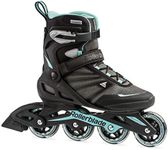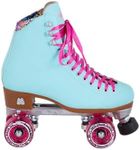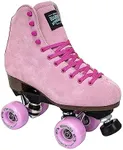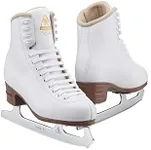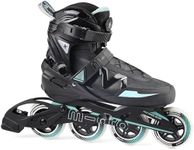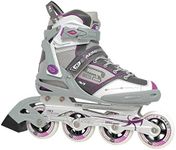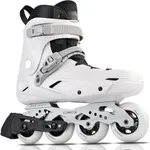Buying Guide for the Best Skates For Women
Choosing the right pair of skates for women involves understanding your specific needs and preferences. Whether you're looking for skates for recreational use, fitness, or competitive sports, it's important to consider several key specifications to ensure you get the best fit and performance. Here are the main factors to consider when selecting skates for women.Type of SkatesThere are different types of skates designed for various activities, such as recreational skating, fitness skating, aggressive skating, and speed skating. Recreational skates are great for casual use and general outdoor skating. Fitness skates are designed for longer distances and provide better support and comfort. Aggressive skates are built for tricks and stunts, offering more durability and protection. Speed skates are designed for racing and have a lower cut for better ankle movement. Choose the type that aligns with your intended use.
Boot MaterialThe material of the skate boot affects comfort, support, and durability. Common materials include leather, synthetic leather, and plastic. Leather boots offer a traditional feel and can mold to your foot over time, providing a custom fit. Synthetic leather is more affordable and still offers good support and comfort. Plastic boots are durable and provide excellent support, making them ideal for beginners. Consider your comfort preferences and the level of support you need when choosing the boot material.
Fit and SizingProper fit is crucial for comfort and performance. Skates should fit snugly without being too tight. Women's skates are often designed with a narrower heel and a lower calf cut to accommodate the shape of a woman's foot and leg. It's important to try on skates with the socks you plan to wear while skating. If you're buying online, refer to the sizing chart provided by the manufacturer and consider reading reviews to understand how the skates fit. A well-fitted skate will prevent blisters and provide better control.
Wheel Size and HardnessWheel size and hardness affect the speed, maneuverability, and comfort of the skates. Larger wheels (80mm and above) are faster and better for long-distance skating, while smaller wheels (below 80mm) offer more control and are better for tricks and short distances. Wheel hardness is measured in durometer (A scale), with higher numbers (85A and above) being harder and more durable, suitable for outdoor use. Softer wheels (below 85A) provide better grip and a smoother ride, ideal for indoor use. Choose wheel size and hardness based on where and how you plan to skate.
Closure SystemThe closure system of skates affects how securely they fit and how easy they are to put on and take off. Common closure systems include laces, buckles, and Velcro straps. Laces offer a customizable fit but can take longer to secure. Buckles provide a quick and secure fit, often used in combination with laces for added support. Velcro straps are easy to adjust and convenient for quick changes. Consider your preference for ease of use and the level of support you need when choosing the closure system.
Brake SystemThe brake system is important for safety, especially for beginners. Most recreational and fitness skates come with a heel brake, which is easy to use and effective for stopping. Some aggressive and speed skates may not have a brake, as they are designed for more advanced skaters who use other stopping techniques. If you're new to skating or plan to skate in areas with traffic or obstacles, a reliable brake system is essential. Make sure the skates you choose have a brake if you need one.
